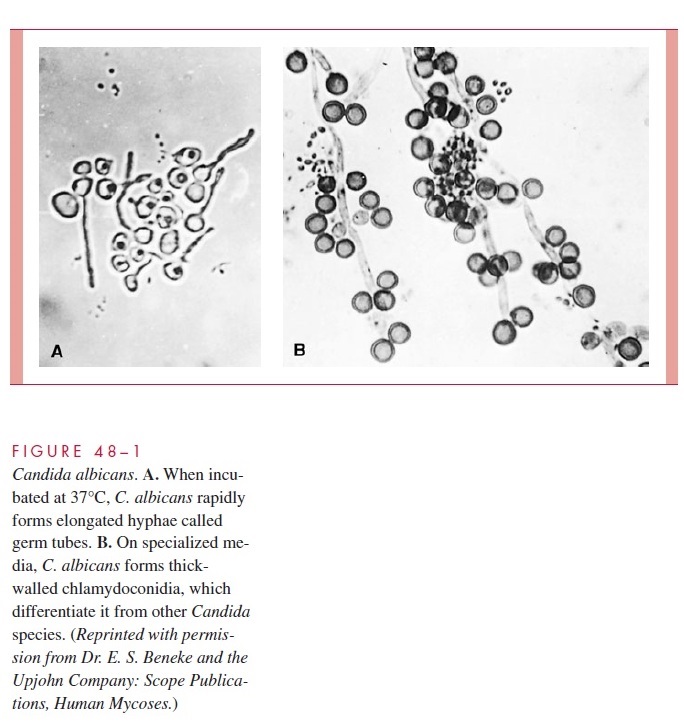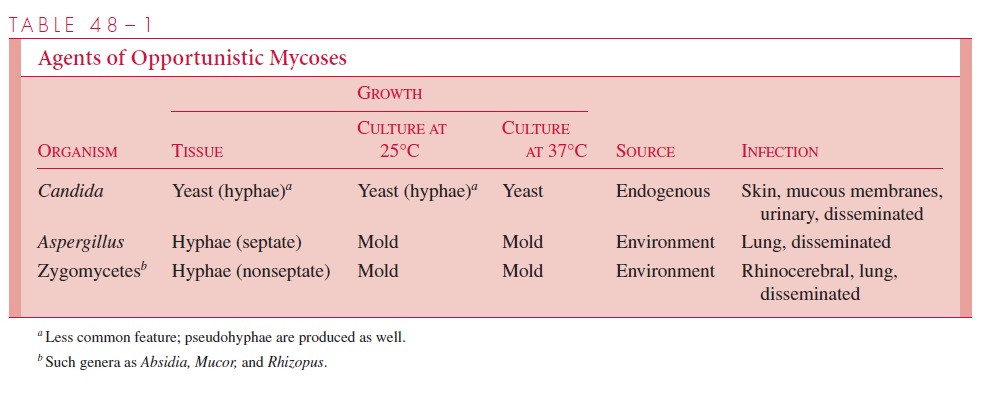Chapter: Medical Microbiology: An Introduction to Infectious Diseases: Candida, Aspergillus, and Other Opportunistic Fungi
Candida albicans - Mycology
Candida albicans
MYCOLOGY
C. albicans grows in multiple morphologic forms, most often as a yeast with budding byformation of blastoconidia. C. albicans is also able to form hyphae triggered by changes in conditions such as temperature, pH, and available nutrients. When observed in their initial stages when still attached to the yeast cell, these hyphae look like sprouts and are called germ tubes (Fig 48–1A). Other elongated forms with restrictions at intervals are called pseudohyphae because they lack the parallel walls and septation of the true hyphae. Thereis evidence that these three forms have distinct stimuli and genetic regulation, making C. al-bicans a polymorphic fungus. Unless otherwise specified, the termhyphaeis used here toencompass both the true and pseudohyphal forms. The hyphal form also develops character-istic terminal thick-walled chlamydoconidia under certain cultural conditions (Fig 48–1B).

The C. albicans cell wall is made up of a mixture of the polysaccharides mannan, glu-can, and chitin alone or in complexes with protein. A fibrillar outer layer extending to the surface contains a number of distinct mannoproteins. The exact composition of the cell wall and surface components varies under different growth and morphologic conditions.

Related Topics